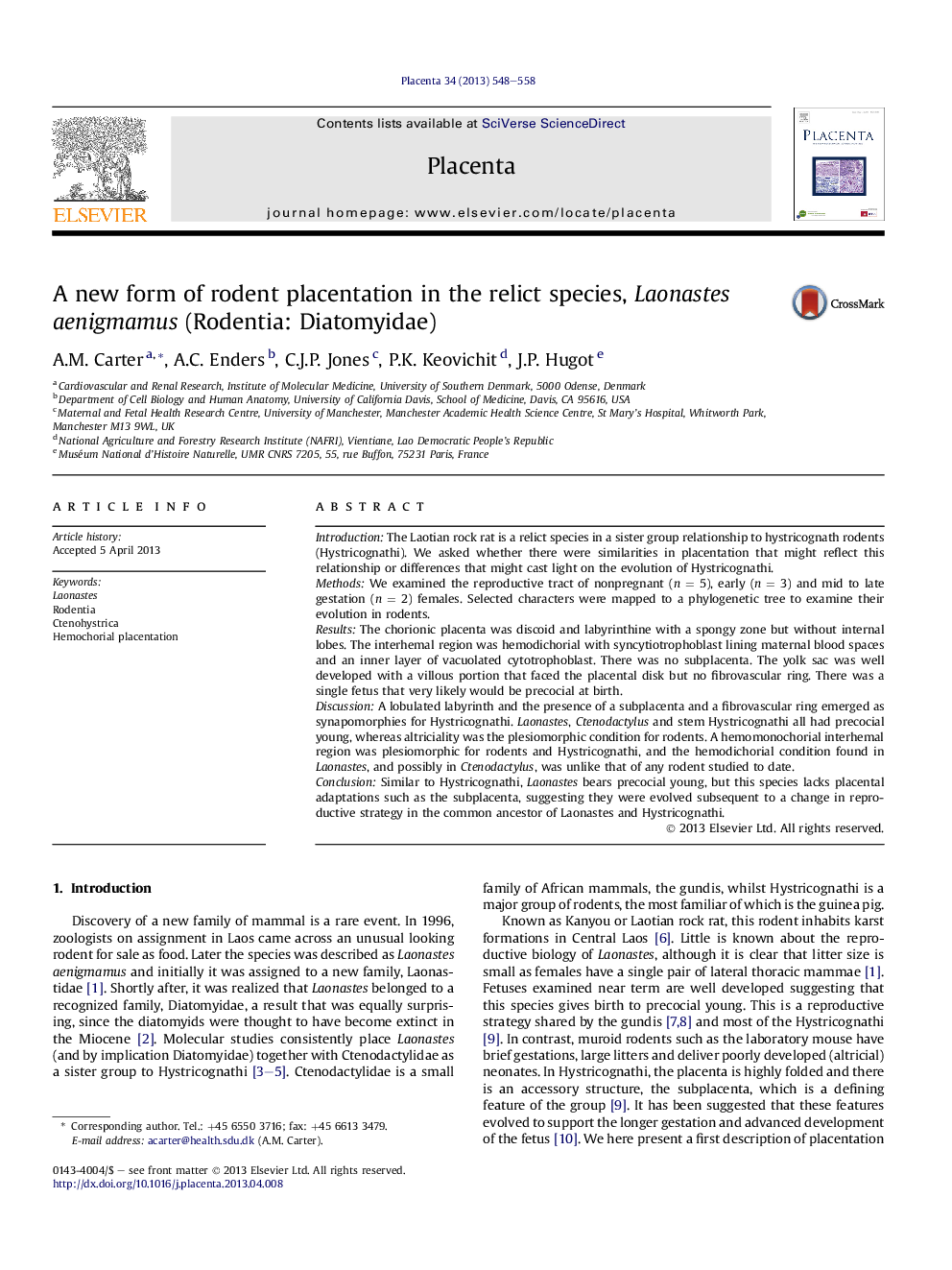| Article ID | Journal | Published Year | Pages | File Type |
|---|---|---|---|---|
| 2789065 | Placenta | 2013 | 11 Pages |
IntroductionThe Laotian rock rat is a relict species in a sister group relationship to hystricognath rodents (Hystricognathi). We asked whether there were similarities in placentation that might reflect this relationship or differences that might cast light on the evolution of Hystricognathi.MethodsWe examined the reproductive tract of nonpregnant (n = 5), early (n = 3) and mid to late gestation (n = 2) females. Selected characters were mapped to a phylogenetic tree to examine their evolution in rodents.ResultsThe chorionic placenta was discoid and labyrinthine with a spongy zone but without internal lobes. The interhemal region was hemodichorial with syncytiotrophoblast lining maternal blood spaces and an inner layer of vacuolated cytotrophoblast. There was no subplacenta. The yolk sac was well developed with a villous portion that faced the placental disk but no fibrovascular ring. There was a single fetus that very likely would be precocial at birth.DiscussionA lobulated labyrinth and the presence of a subplacenta and a fibrovascular ring emerged as synapomorphies for Hystricognathi. Laonastes, Ctenodactylus and stem Hystricognathi all had precocial young, whereas altriciality was the plesiomorphic condition for rodents. A hemomonochorial interhemal region was plesiomorphic for rodents and Hystricognathi, and the hemodichorial condition found in Laonastes, and possibly in Ctenodactylus, was unlike that of any rodent studied to date.ConclusionSimilar to Hystricognathi, Laonastes bears precocial young, but this species lacks placental adaptations such as the subplacenta, suggesting they were evolved subsequent to a change in reproductive strategy in the common ancestor of Laonastes and Hystricognathi.
